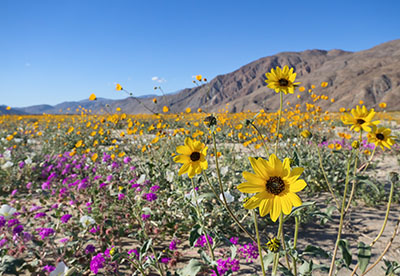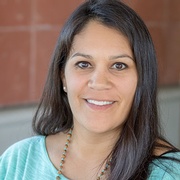Working with Tribal Leaders, Reaching Out to Tribal Youth: Tobacco Prevention in Indian Country
By Jennifer Geisler | September 24, 2019
Tobacco prevention in Indian Country is different. Every tribe is unique, and programs need to be tailored tribe by tribe. California has 109 tribal nations, so keeping programs relevant to each tribe is a big task.
Respect for elders and commitment to youth play a vital role in any of our tobacco-related messaging. It is also important to acknowledge and honor the role of sacred tobacco in tribal life.
In California, we have an exciting new state tobacco prevention grant that addresses these issues. The Statewide American Indian Coordinating Center (AICC) allows ETR’s experts in tribal tobacco prevention to provide a range of services and support to interested tribes. For example, we have a media section that assists tribes in creating and building media specifically designed with and for their people and customs. We can support radio, billboard and TV ads, as well as social media campaigns for tribes that are interested. Tribes will have full ownership of what they create.
Support from the Tribal Advisory Committee
The AICC works with a Tribal Advisory Committee (TAC) to guide the work. With the support of the tribal leaders who are part of TAC, we can assist tribes in developing policies and building practices that address tobacco-related disparities. We’ve also been offering presentations on cultural humility to Local Lead Agencies—the city and county health departments receiving funding from the California Tobacco Control Program. This creates a more open and informed process when tribal representatives interface with local health departments.
Tribes can choose to apply for grant money to fund their tailored prevention programs. Tribal leaders have shown great interest in this option. Some have joined our TAC. Some have helped promote the effort by building collaboration with other leaders. Some have asked us to present at tribal conferences. We typically talk with leaders many times as we discuss their ideas, our program, and the role they might choose to play in our efforts. These practices allow us to build a more authentic and trusting relationship over time.
Youth Are Our Focus
Youth are the future of Indian nations. This is a value cherished by all California tribes. Youth are our future leaders—not just in Indian Country, but in the world beyond. We have an obligation to guide our young people as much as possible. Tribal leaders, and our program, put a lot of effort into educating youth, working with them and guiding them toward a right and respectful path.
 This is one of the reasons tribal leaders connect well with our program. We have rich conversations with them about how tobacco is affecting tribal youth, including the ways youth are being targeted by tobacco advertising. We discuss ways tobacco advertising misappropriates Indian culture and misrepresents ceremonial tobacco. Leaders’ wisdom, combined with our program’s resources, can support tribes in taking effective steps to reach their youth.
This is one of the reasons tribal leaders connect well with our program. We have rich conversations with them about how tobacco is affecting tribal youth, including the ways youth are being targeted by tobacco advertising. We discuss ways tobacco advertising misappropriates Indian culture and misrepresents ceremonial tobacco. Leaders’ wisdom, combined with our program’s resources, can support tribes in taking effective steps to reach their youth.
This is where a tailored approach becomes so imperative. In some tribes, for example, a social media or texting campaign might be quite popular with young people. However, on a reservation with no internet, social media will not be a good strategy.
Trying Out Innovations
Working with tribal leaders also allows us to try out some innovative approaches that promote cultural respect and values. For example, I have asked some tribal elders, leaders and respected members to come talk to groups of youth. We will ask the elders to describe the ceremonial purposes of sacred tobacco. They can explain that sacred tobacco might honor the Creator, or support a request for guidance, or deliver a prayer. The elders can then talk with youth about the ways sacred tobacco is used—sometimes placed on the ground and burned, sometimes smoked (but not inhaled) in a pipe.
We will contrast this with commercial tobacco, including its danger as an addictive substance and a health threat. We can describe the ways the tobacco industry has targeted Indian youth in advertising, and the environmental damage tobacco causes. Another universal value in Indian Country is that we all have a sacred obligation to care for Mother Earth. Commercial tobacco production and cultivation is harmful to the environment. Commercial tobacco litter harms our lands, our waterways and our wildlife.
Seeing and Honoring Differences
I was born and raised on the Rincon reservation in Southern California. These were neighbors to my own tribe, the San Pasqual Band of Mission Indians. I have grown to learn about the people and cultures in these tribes.
 More than that, however, I know that every tribe is different. Each tribe has its own language and cultural traditions. I have learned that when you work with one tribe, you have worked with one tribe. The next tribe may be similar in some ways, and I guarantee you it will also be different in some very important ways. There are big tribes and small. Rural and urban. Gaming tribes and those without gaming. Some with revenue sources—gas stations, campgrounds, smoke shops. Some with no outside revenue.
More than that, however, I know that every tribe is different. Each tribe has its own language and cultural traditions. I have learned that when you work with one tribe, you have worked with one tribe. The next tribe may be similar in some ways, and I guarantee you it will also be different in some very important ways. There are big tribes and small. Rural and urban. Gaming tribes and those without gaming. Some with revenue sources—gas stations, campgrounds, smoke shops. Some with no outside revenue.
One of the reasons I am so excited about the AICC grant is that it absolutely honors these differences and distinctions. Tribes are not expected to accommodate to a generic message or approach. They are encouraged to work with the traditions and values of their own culture to create messaging and programs that will work with their own people.
I look forward to some powerful collaborations and creative innovations as we move ahead in our partnerships.
Jennifer Geisler is a Project Coordinator at ETR. She has extensive experience doing alcohol and tobacco prevention in tribal communities.




